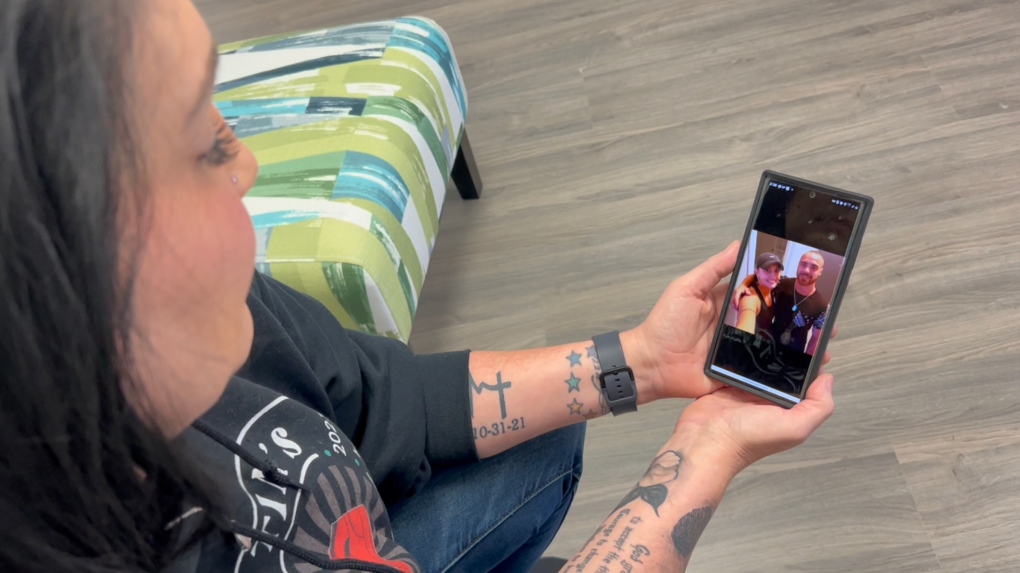Health
Quebec tops 70,000 coronavirus cases as province reports 637 new infections – Global News
Prime Minister Justin Trudeau says Canada has inked a deal to obtain up to 20 million doses of another coronavirus vaccine candidate.
The vaccine is being developed by AstraZeneca and Oxford University.
READ MORE: Here’s when experts say Oxford University’s coronavirus vaccine could be ready

It’s one of several potential vaccines that the government has signed deals to procure in the event they are successful.
Agreements were previously reached with major pharmaceutical companies including Sanofi, GlaxoSmithKline, Pfizer, Moderna, Johnson & Johnson and Novavax.
[ Sign up for our Health IQ newsletter for the latest coronavirus updates ]
“Canadians must have access to a safe and effective vaccine against COVID-19 as quickly as possible, no matter where it was developed,” Trudeau said during a press conference in Ottawa on Friday.

Trudeau also announced that Canada is joining an international coalition on vaccine distribution.
Canada will contribute $440 million toward the COVID-19 Vaccine Global Access Facility, known as COVAX.
Canada is joining both parts of the initiative: one which secures access to millions of doses of vaccines for Canada, and the other which has wealthier nations pooling their funds to help lower and middle-income countries secure doses as well.
The deal will give Canada the option to buy up to 15 million doses, Trudeau said.
Joining the program will allow Canada to help ensure the successful vaccine is distributed “quickly and fairly” around the world, according to the prime minister.
“This pandemic cannot be solved by any one country alone because to eliminate the virus anywhere, we need to eliminate it everywhere,” he said.
–With files from The Canadian Press
© 2020 Global News, a division of Corus Entertainment Inc.
Health
Mobile Health Clinic in Bridgewater this week – Country 100.7


Nova Scotia Health’s mobile primary care clinic. Photo: NS Health.
Nova Scotia Health’s mobile primary care clinic will be retunring to Bridgewater this week for two sessions on Wednesday and Sunday.
They will be setting up at the South Shore Community Health building located at 35 North Street. On Wednesday, April 17 the clinic will be open from 5:30 p.m. until 9:00 p.m., and on Sunday, April 21 it will operate from 9:30 a.m. until 3:00 p.m,.
The clinic is intended to help those without a family doctor, or those unable to book an appointment with their family doctor for non-urgent medical issues.
Types of concerns that may be addressed at the mobile primary care clinic include:
- Prescription refills or renewals (except for controlled substances)
- Minor respiratory symptoms
- Sore throat
- Earaches
- Fever
- Headache
- Rashes
- Minor gastrointestinal concerns (vomiting and diarrhea)
- Cough, flu, or cold symptoms
- Urinary tract infections
- Muscle pain
$(document).ready(function()
//handle visual composer text blocks ?>
var topel = $(‘img.header-image’).next(‘div’).find(‘.wpb_text_column’);
if (topel.length > 0)
$(‘img.header-image’).prependTo(topel.find(‘.wpb_wrapper’));
// image with cation
topel = $(‘div.header-image-with-caption’).next(‘div’).find(‘.wpb_text_column’);
if (topel.length > 0)
$(‘div.header-image-with-caption’).prependTo(topel.find(‘.wpb_wrapper’));
);
Health
Windsor mom pushing for better addiction transitional supports | CTV News – CTV News Windsor


A new study published in a Canadian medical journal paints a bleak picture around opioid-related deaths in Canada.
It shows the number of those deaths has more than doubled over a three-year period when the pandemic hit high gear.
The study, published recently in the Canadian Medical Association Journal, covers a period from January of 2019 to December 2021.
“There was this immediate and significant increase in opioid related deaths,” said Tara Gomes, an epidemiologist at Unity Health.
Over that three-year stretch, opioid deaths jumped from 3,007 in 2019 to more than 6,222 in 2022, which according to study authors equates to a quarter million years of life lost due to opioid-related deaths.
The group most affected is men between the ages of 30 and 39.
It hits close to home for Christy Soulliere of Windsor, Ont. who lost her son Austin Tremblay to an accidental overdose in November, 2022.
“He’s gone. You know, and there’s nothing worse in the world than losing a child,” said Soulliere.
She said Tremblay battled addiction since he was 15 and was in and out of treatment facilities more than a dozen times.
On his last day, after 30 days of sobriety, he took a substance which was laced with four times the lethal dose of fentanyl.
“I crumbled,” she recalled. “My world, everything I had fought 12 years to stop, it happened.”
Tremblay was just 27 years old.
In Ontario, one in three deaths of people in their 20s and 30s are opioid related and according to the study, they’re primarily caused by fentanyl.
“These are kids, it’s a whole generation. And if those numbers are right, it’s 25 per cent of that generation is no longer going to be here,” said Soulliere. “I don’t know how people aren’t taking that serious.”
The report suggests the increase among younger age groups points to a critical need for targeted prevention efforts.
And that’s exactly what Soulliere is doing in her son’s memory.
She launched Austin’s Red Shoe Project with the goal of opening a transitional house for people who have gotten sober, left detox and need support before treatment beds open up.
“Nobody’s staying sober for those four months. So there needs to be an area that fills that gap,” she said. “And there needs to be more support for families that are dealing with this themselves.”
Health
Upgrading the food at VGH for patient and planetary health – Vancouver Is Awesome

There are no sirens or flashing lights in the kitchen at Vancouver General Hospital, but their staff — and several key people — are addressing an emergency: the food.
Not the food that visitors and staff buy, but rather the food that is delivered to VGH’s hundreds of patients daily, each of whom is healing from any number of conditions covering a wide spectrum of nutritional needs.
Hospital food, with its rep for being boring, basic and bland, has been a long-overlooked component of patient care.
“We cannot afford to not talk about it,” says Ned Bell.
The Vancouver-based chef, known for his commitment to fresh, seasonal ingredients, including sustainable seafood, has been working with VGH for the past few years by way of a pilot program to modernize the hospital’s food program.
Patients said they wanted more diverse and meatless options
While VGH has always served healthy food that meets nutritional requirements, over the years, patients have expressed a wish for the hospital’s roster of largely Western-based meals to better reflect the diversity of its diners. That means more plant-based options and more global flavours, all in the name of health.
Bell didn’t have the state of hospital food on his plate for most of his culinary career until his wife began spending more time at VGH as she underwent cancer treatment. The timing was crucial, as conversations were in the beginning stages of implementing a pilot program to study how food could be improved and factor in cultural and dietary diversity, as well as more eco-friendly choices.
And, of course, being a chef, Bell was keen to find out if hospital food could actually taste great.
Joining a team led by Dr. Annie Lalande, surgical resident and PhD student in the Institute for Resources, Environment and Sustainability at the University of British Columbia (UBC), and Tiffany Chiang, director of food service transformation and strategic projects at Vancouver Coastal Health (VCH), Bell, along with key VGH staff like registered dietitian in acute care Elaine Eppler, got to work on developing new recipes.
Though the pandemic put a hold on the fieldwork, in 2022 the team regrouped to get the Planetary Health menu pilot up and running.
Revamping hospital food menu not the same as in a restaurant
Given the scope of the hospital’s food program, and its limitations, as well as the highly specified nutritional requirements each meal has to meet, tackling the menu at VGH wasn’t anything like revamping a restaurant menu.
“I had to learn a ton,” shares Bell during an in-person menu tasting and info session. “My learning curve was steep.”
Starting with an initial batch of 53 recipes, Bell explored all the ways by which he could dial up the flavour, sustainability, and overall deliciousness of existing dishes in the VGH food program.
The working list was narrowed down to about 20 or so lunch and dinner dishes (the team soon realized breakfast items needed the least attention for the time being) and Bell sought ways to make minor adjustments, asking question after question along the way.
Where could ground beef be subbed for ground turkey or lentils? Which ingredients could be sourced from within B.C. at a lower price point, to boot? What could be made in-house rather than brought in packaged? Could a sauce or dressing import offer more flavour in a meal?
Adding garnish a game-changer
But it was the simple addition of garnish to the pilot program’s dishes, a practice often reserved for restaurants, that emerged as a game-changer.
What might seem like a minor detail to some has proven to be a significant catalyst in transforming not only the visual appeal of hospital meals but also the overall satisfaction and well-being of patients.
“Sauce and a bit of garnish made a good dish better,” explains Lalande.
Lalande explains that the pilot program began by gauging patient feedback through multiple means to discover what people most wanted to see improved. “More flavour,” was the dominant response, recalls Lalande, adding that patients spoke up about wanting the ingredients to be fresher and the recipes “more culturally diverse,” with more seasoning and texture.
Recognizing that crafting scratch-made meals for six to 700 patients a day is no small feat, Lalande says it was essential for the pilot program to look at meaningful solutions with significant impact.
“Unless we take this time to stop and embrace the complexity, it’s hard to come up with something that isn’t a band-aid solution,” she adds, noting that change in hospital systems is so often reactive and not proactive.
Looking at hospital food programs in North America and even as far away as Lebanon for inspiration on how to be more plant-forward and eco-conscious, the changes in the works at VGH are likely “the most progressive in Canada,” attests Lalande.
Subbing in plant-based proteins for meat – without shouting about it
While cost is, of course, a factor, the pilot program made certain to keep ingredient choices within the budget, even finding ways to save by using a plant-based protein source over an animal one. Chickpeas, generally, are cheaper than chicken.
“Plant-based proteins do tend to be less expensive,” says Lalande.
Oftentimes, offering a meatless version of a familiar dish didn’t yield objections.
“We don’t scream from the rooftop that the Sloppy Joe is vegetarian,” says Bell.
It simply is vegetarian, which makes it an option for more patients than a beef version.
Popular new meals include a chickpea curry and trout with tomato miso dressing
A not-so-coincidental side effect of embracing more plants, whether it be fresh vegetables alongside a moist piece of fish or lentils in a Sloppy Joe, is that the impact on the environment is lessened. Even shifting to leaner animal proteins, like turkey or trout, are lower-impact options.
It’s not exactly an off-label use of the food program, but it’s a way VGH has of “giving the planet a seat at the table,” explains Lalande.
Bell, who has long championed a “globally inspired, locally sourced” approach to his cooking, says he’s never worked so hard on perfecting so many recipes in his career.
Some of Bell’s dishes that have emerged as popular favourites have been the Steelhead Trout with Tomato Miso Dressing; Creamy Coconut Chickpea Curry with Cauliflower and Cashews with Mango Chutney; and the Korean Gochujang Bowl.
During the study, patients answered surveys about the meal, and the team kept an eye on how empty the plates were when they came back to the kitchen.
Eppler calls the Planetary Health pilot program “probably the most exciting thing I’ve ever worked on in my 36-year career.”
Food is more than nutrients: ‘there’s also the emotional feeling’
The longtime dietitian describes the constant and nuanced challenges of working with patients who not only have specific dietary needs but also various struggles to eat. Many hospital patients are unmotivated to eat or do not have the strength for rigorous chewing.
However, having food that looks appetizing and hints at the taste and care of home, can go a long way in getting a patient excited about meal time.
What Bell calls those “little touches of home-made,” can wind up “encouraging people to eat,” describes Lalande.
“Nutrients help with the physical — but there’s also the emotional feeling,” elaborates Eppler. Food encompasses so much, she continues: “It’s comfort, memory, healing, companionship, building relationships, respecting culture.”
With the pilot program concluded, VGH is preparing to implement a variety of improvements to its food system in the facility, starting with adjustments to its meal ordering and distribution system to work on a hub or satellite model to shorten the distance between patients and their food.
The plan is to continue “with a few of the recipes right away and introducing [some of the] recipes to other VGH hospitals,” explains Chiang.
“This work matters,” says Bell, who adds he is extremely proud of the recipes he and the team have produced. “There is an opportunity for us to make changes and that is so incredibly powerful.”
-
Tech1 hour ago
Motorola's Edge 50 Phone Line Has Moto AI, 125-Watt Charging – CNET
-
Media20 hours ago
Trump Media plunges amid plan to issue more shares. It's lost $7 billion in value since its peak. – CBS News
-



 Sports23 hours ago
Sports23 hours agoRafael Nadal confirms he’s ready for Barcelona: ‘I’m going to give my all’ – ATP Tour
-



 Investment21 hours ago
Investment21 hours agoLatest investment in private health care in P.E.I. raising concerns – CBC.ca
-
Media23 hours ago
Meta's news ban changed how people share political info — for the worse, studies show – CBC.ca
-



 Politics23 hours ago
Politics23 hours agoQuebec employers group urges governments to base immigration on labour needs, not politics – CityNews Montreal
-



 Investment20 hours ago
Investment20 hours agoInvestors are growing increasingly weary of AI – TechCrunch
-
Business23 hours ago
Tesla to lay off 10% of its workforce as sales fall – CBC News








